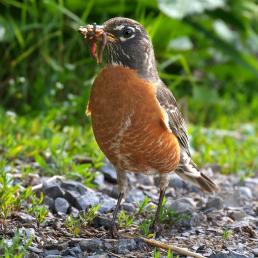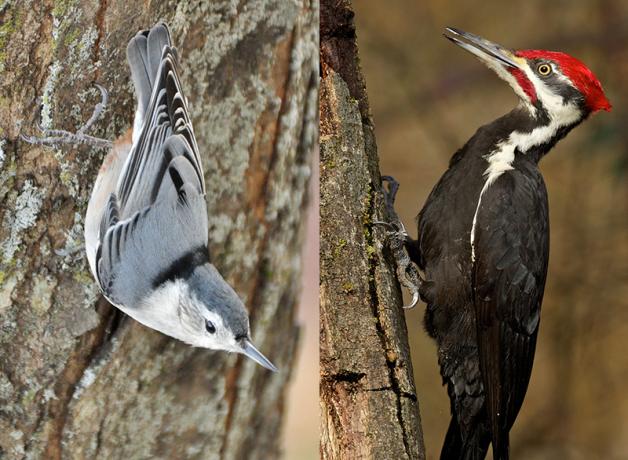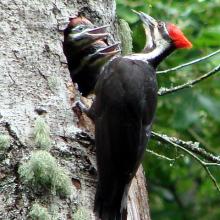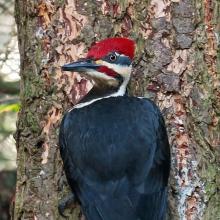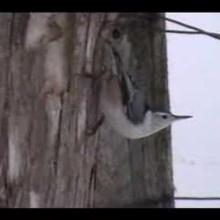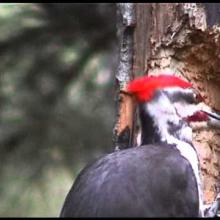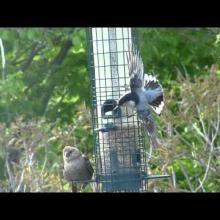

Join BirdNote tomorrow, November 30th!
Illustrator David Sibley and actor H. Jon Benjamin will face off in the bird illustration battle of the century during BirdNote's Year-end Celebration and Auction!
No bird is better adapted for climbing up a tree trunk than a woodpecker. The foot of this Pileated Woodpecker is ideal for clinging, and its relatively short legs allow it to anchor itself securely. When traveling upward, the woodpecker’s a master. But hitching down? Not so much — usually they will fly. Nuthatches, however, can easily go up and down. This White-breasted Nuthatch walks over the bark of trees by grasping with one leg while using the other for a prop. It also has a rear-facing toe equipped with a long, sharp claw that’s ideal for hanging on while heading downward.
BirdNote®
There’s More Than One Way to Climb a Tree
Written by Bob Sundstrom
This is BirdNote.
There’s more than one way to climb a tree.
[Pileated Woodpecker drum, http://macaulaylibrary.org/audio/190889, in first 10 seconds of cut]
No bird is better adapted for climbing up a tree trunk than a woodpecker. Its foot design is ideal for clinging, with two toes pointing forward and two back. Relatively short legs mean it can anchor itself securely. And the spiky central feathers in its long, stiff tail dig into the bark, bracing the bird against the tree while climbing. So when traveling upward, the woodpecker’s a master. Hitching down? Not so much — usually they’ll fly. [White-breasted Nuthatch, http://macaulaylibrary.org/audio/120214, 0.04-.07]
Nuthatches are also expert climbers, but they can easily go up and down. A nuthatch’s tail is shorter than a woodpecker’s, but its legs are longer and very strong. It walks over the bark by grasping with one leg while using the other for a prop. And it has a rear-facing toe equipped with a long, sharp claw that’s ideal for hanging on while heading downward. [White-breasted Nuthatch, http://macaulaylibrary.org/audio/120214, 0.04-.07]
One way these different climbing adaptations play out: Primarily, nuthatches search for insects in the crevices of bark while climbing down, while woodpeckers forage as they climb up. So one sees prey that the other doesn’t.
For BirdNote, I’m Mary McCann.
###
Bird sounds provided by The Macaulay Library of Natural Sounds at the Cornell Lab of Ornithology, Ithaca, New York. Pileated Woodpecker ML 190889 recorded by F. R. Fuenzalida. White-breasted Nuthatch ML 120214 recorded by G.A. Keller.
BirdNote’s theme music was composed and played by Nancy Rumbel and John Kessler.
Producer: John Kessler
Executive Producer: Dominic Black
© 2015 Tune In to Nature.org September 2018/2021 / October 2023
Narrator: Mary McCann
ID #: climbing-01-2021-9-18climbing-01
Sources include: The Sibley Guide to Bird Life & Behavior; http://www.hiltonpond.org/ThisWeek071115.html
